Weekly recap
US equities finished the week higher, rebounding from a sharp selloff the previous Friday, which saw the S&P 500 register its worst day since April.
The volatility last week came as investors weighed up US-China trade tensions, a dovish stance from Fed Chair Jerome Powell, and a solid start to earnings season, which saw big banks such as JP Morgan, Citigroup, and Wells Fargo all report better than expected results. In total 12% of the S&P 500 reported earnings, and of those, 86% beat forecasts.
However, regional banks reported problems with loans and increased credit risk, which sent the market lower on Thursday. This also helped send the CBOE Volatility Index to the highest level since April.
Gold surged over 5.7% last week, marking the strongest weekly gain since April, highlighting concerns over US-China trade uncertainty, US government shutdown worries, rising global debt fears along with expectations of looser monetary policy from the Federal Reserve.
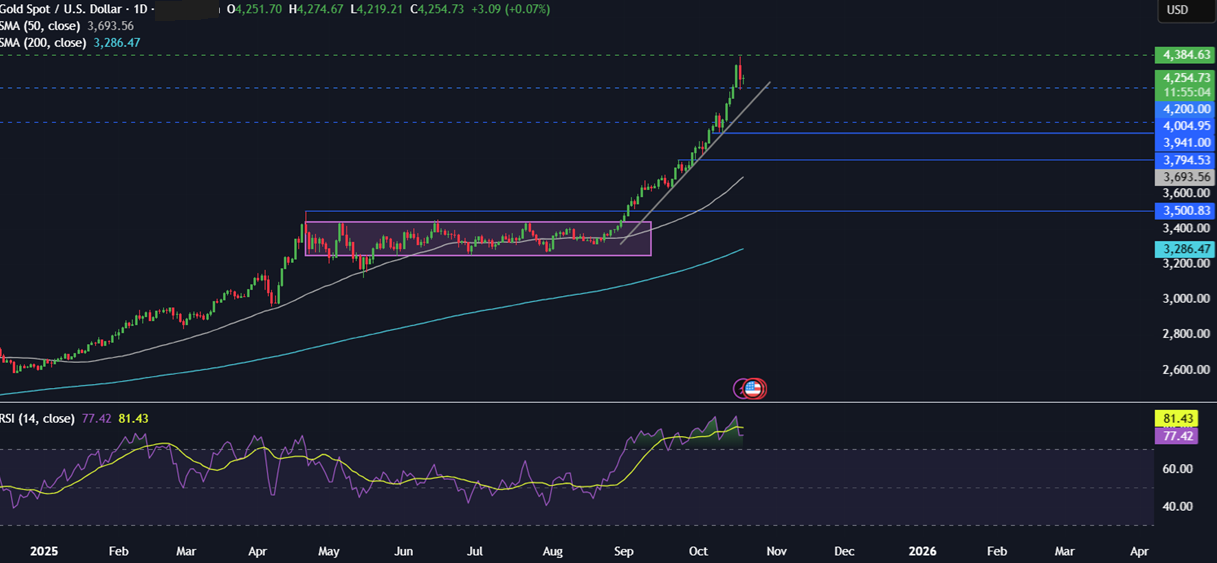
China’s 15th fourth plenum (Monday – Thursday)
The Chinese Communist Party’s Central Committee will hold its fourth plenum meeting, which runs from Monday to Thursday, and the primary focus will be on discussions of China’s 15th five-year plan covering developments between 2026 and 2030. This will be the first insight into Beijing’s medium-term policy priorities, where particular interest will be paid on development, including how to expand consumption. Detailed policy targets are not expected until March. This comes as Chinese data early on Monday showed that the Chinese economy grew 4.8% YoY annually, slowing for a second consecutive quarter from the 5.2% growth in Q2. Still, the economy managed to beat expectations for a steeper decline. AUD/USD has found support above the 200 SMA.
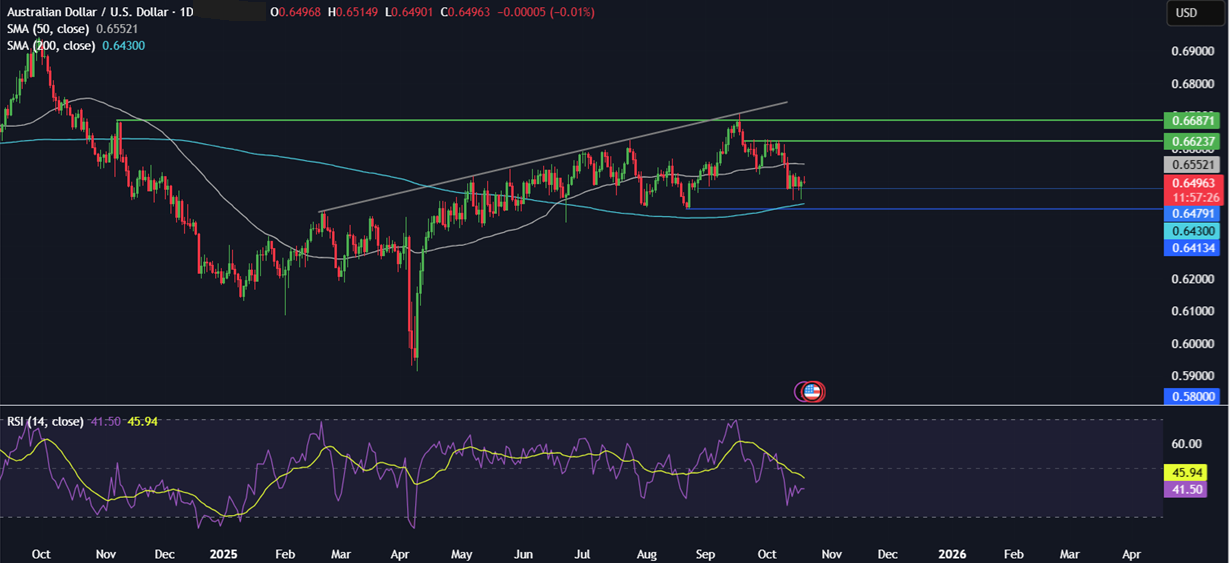
US earnings season
US earnings season ramps up this week with 88 companies from the S&P 500 scheduled to report, including Coca-Cola, Netflix, Intel, and Procter & Gamble, as well as Tesla – the first of the Magnificent 7 (Microsoft, Apple, Nvidia, Alphabet, Meta, and Tesla) reporting earnings. Relatively few companies have reported so far, but of those that have, 86% have beaten expectations. With US data in short supply, US earnings will be more closely watched for clues on the health of the US economy. Upbeat earnings could help lift US stocks and the S&P 500.
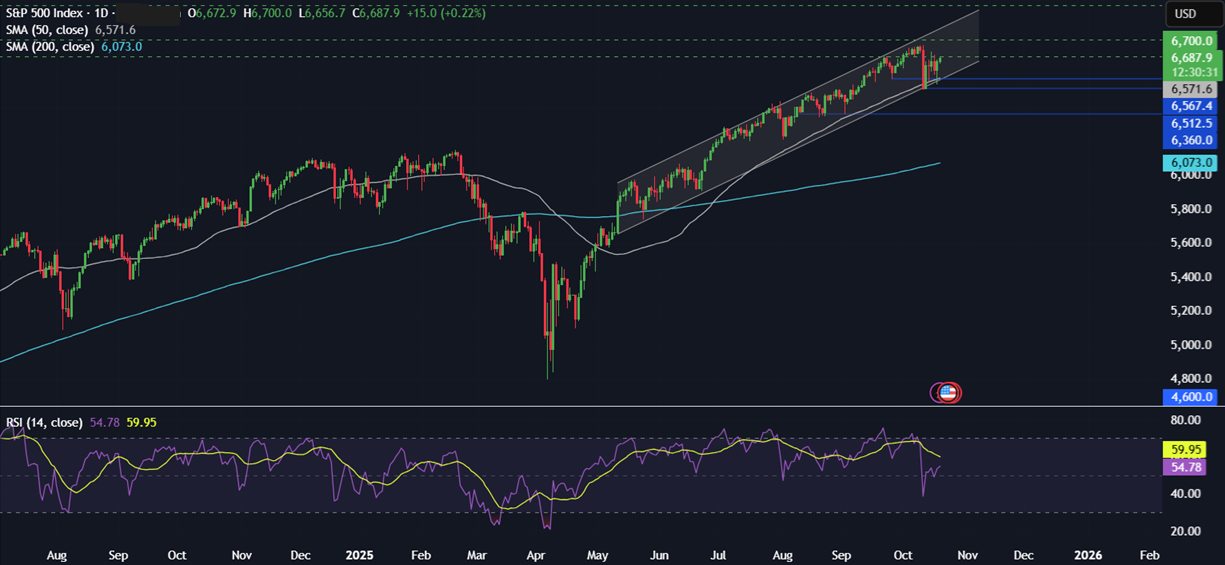
UK public sector borrowing (Tuesday)
The latest public sector borrowing numbers highlighted the challenges that the government faces in balancing the books and maintaining fiscal credibility in the November budget. The £18 billion number was lowered but remained significantly above estimates, taking borrowing figures for the fiscal year to date to over £80 billion, a record number outside the pandemic and well above the OBR estimates. The problem the government faces is that recent attempts to cut public spending ran into a brick wall from its own MPs, meaning that tax hikes in the Budget will likely be the order of the day, which could hurt the economy further. Larger-than-expected borrowing could weigh on sentiment and pull FTSE 100 lower.
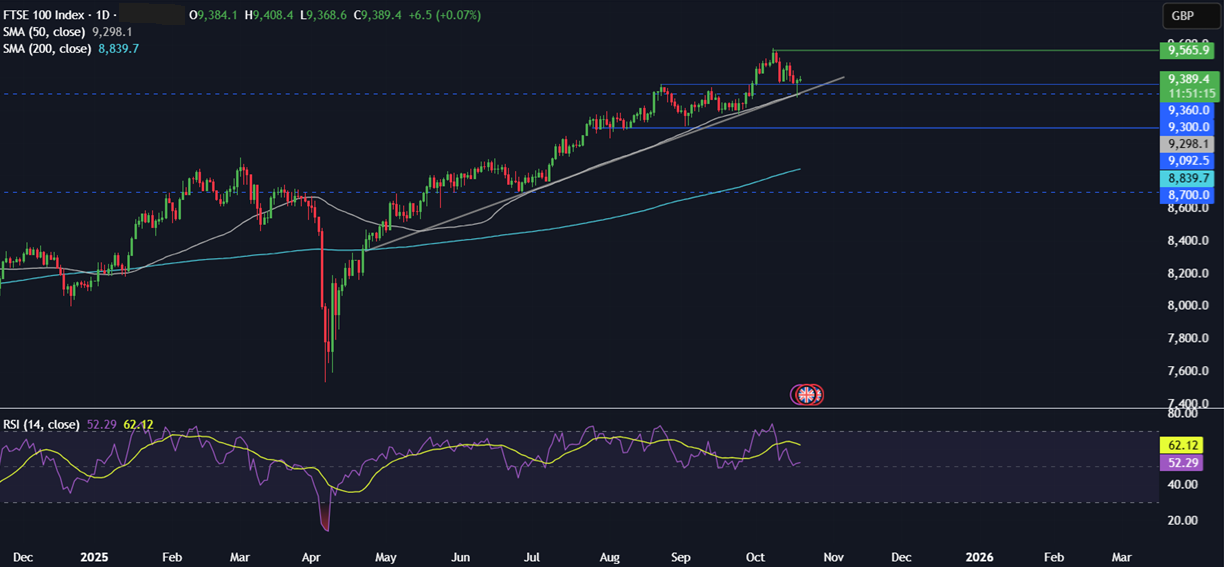
Canada CPI (Tuesday)
Expectations are for inflation to rise to 2.3% YoY in September, up from 1.9% in August. This inflation report will be the last one before the October BoC meeting, where the market is pricing in just a 64% probability of a 25-basis point rate cut. A 25-basis point rate cut is not fully priced in until December. However, the data could help shape expectations. The central bank removed guidance when it cut rates in September, but BoE Governor said it will continue to assess the risks and be ready to respond when needed. The September rate cut came owing to a weaker economy and fewer upside risks to inflation. Cooler inflation could fuel rate cut expectations and pull CAD lower, boosting USD/CAD.
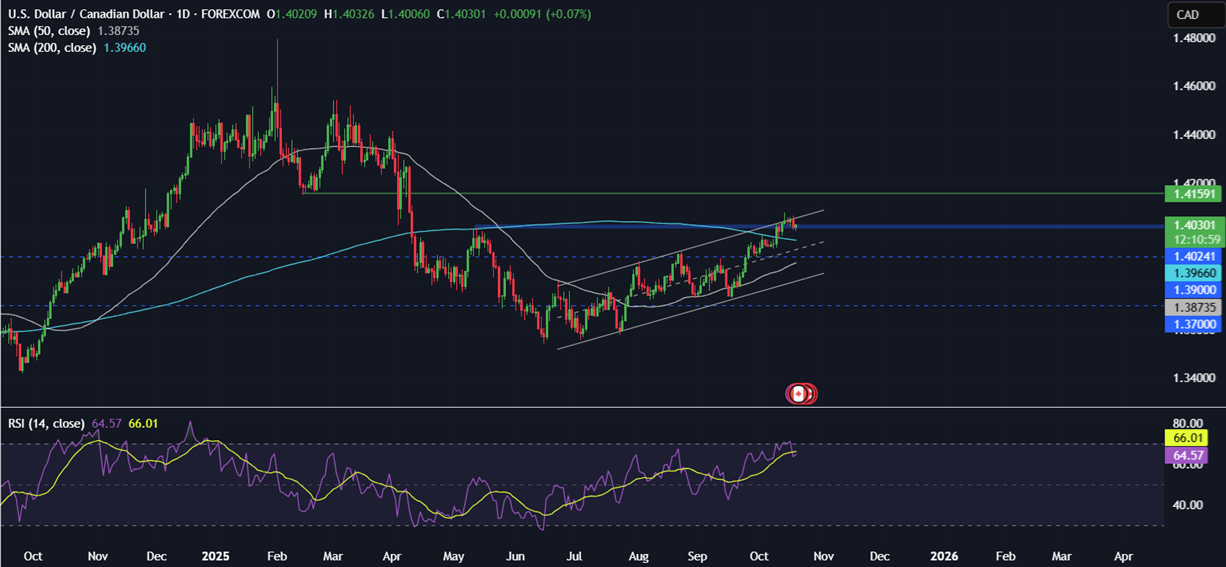
UK CPI (Wednesday)
UK CPI is expected to peak at 4% in September and then drift lower over the rest of the year, according to the Bank of England. Inflation in August remains steady at 3.8% unchanged from July, while the latest food inflation has shown a continuing acceleration to 5.1% keeping household finances under pressure. Even if inflation does come in lower than expected, the Bank of England is not expected to move on rates anytime soon, given the uncertainty surrounding the upcoming November budget, despite sticky inflation, which is still almost double the central bank’s target. Any GBP/USD upside will likely be limited owing to Budget worries.
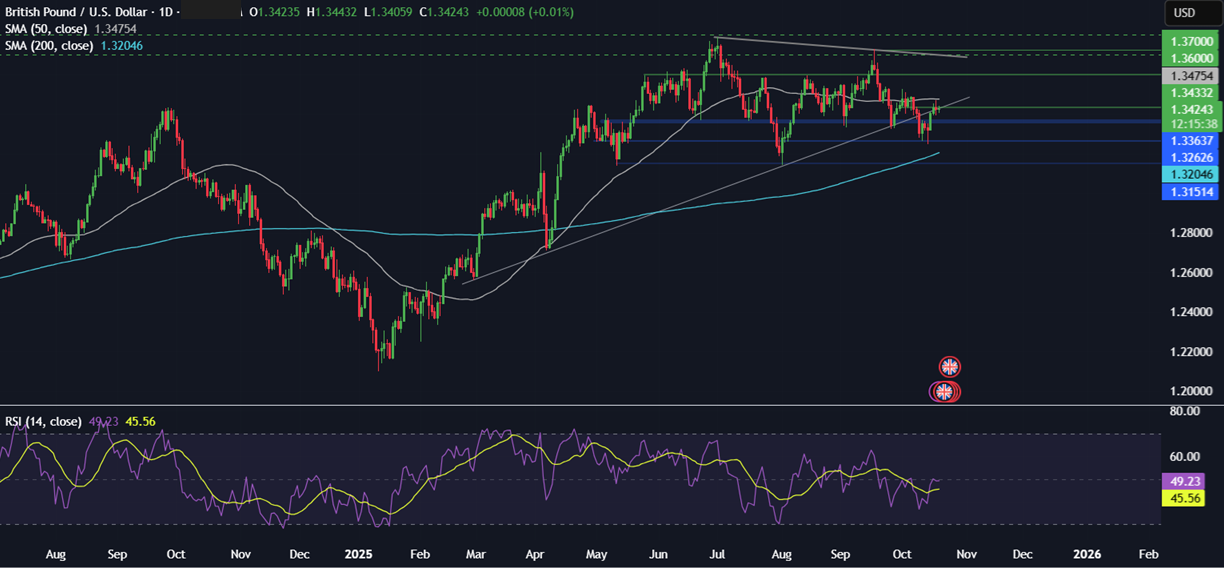
Eurozone PMI (Friday)
Economists expect the October PMI to be relatively similar to that of September. Manufacturing PMI is expected to tick modestly higher value to 49.9, up from 49.8. While services PMI IS expected to ease to 51.1, down from 51.3. This would bring the composite PMI, which is considered a good gauge for business activity, to 51, down from 51.2. This indicates to a quarterly growth rate of around 0.4% however, the eurozone’s largest economy, Germany, remains in focus as recent Bundesbank data points to a 0% growth in Q3 following a particularly weak set of German industrial data in August. France, of course, will be in focus given the recent political turmoil, although the slight stabilisation in recent sessions may not be accounted for in the data. As for the ECB, the figures are unlikely to have much impact on the near-term policy trajectory, with markets pricing in no further rate cuts this year. Stronger-than-expected data could help boost EUR/USD.
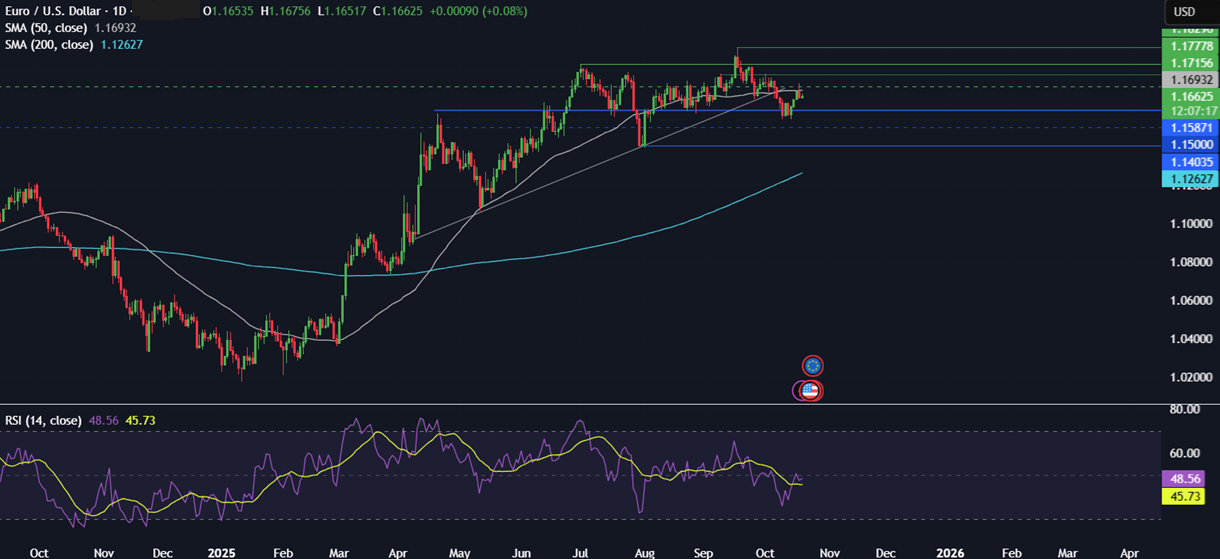
US CPI (Friday)
With the US government still in shutdown, most U.S. data has been delayed; however, there will be an exception for the September inflation report. The report will be available just in time for the Fed meeting on the 28th and 29th of October, where the Fed is expected to deliver another 25-basis point rate cut. Whilst Federal Reserve chair Jerome Powell warned over weakness in the jobs market, it’s worth remembering that Q2 GDP was at 3.8% on an annualised basis, which could add inflationary pressures; also, these could come from Trump’s tariffs. August headline inflation rose to 2.9% from 2.7% in July, while core inflation remained unchanged at 3.1%. CPI is expected to rise to 3.1% in September. The data comes as strong divisions are opening in the FOMC regarding the Fed’s next move, the markets are pricing in back-to-back rate cuts in October and December. Cooler-than-expected data could pull the USD lower and boost stocks such as the Nasdaq and Gold.
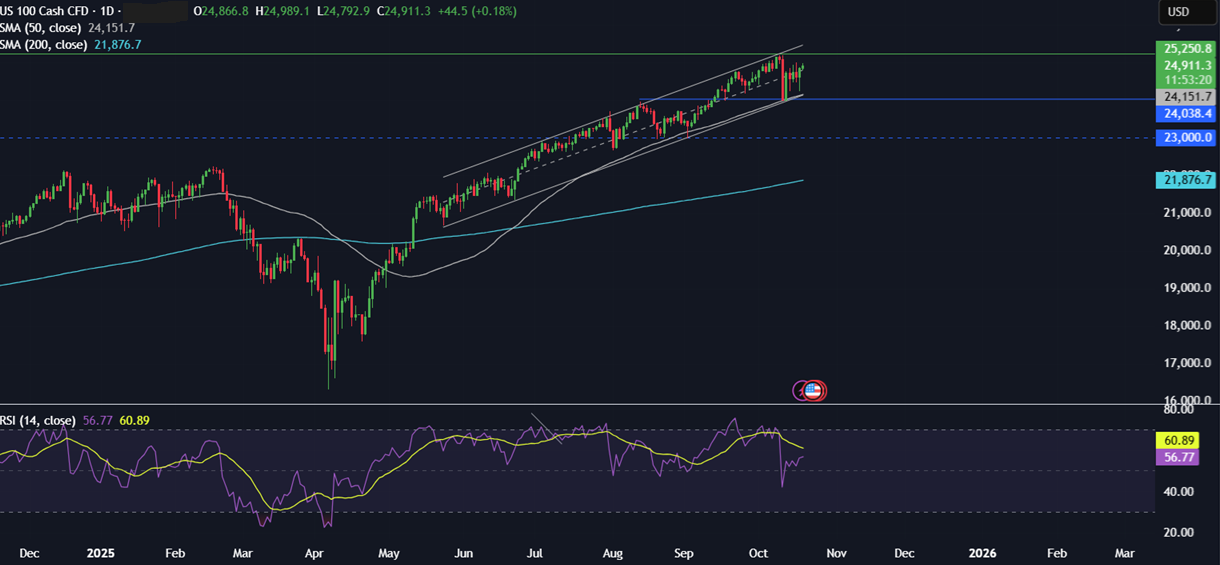
Japanese CPI (Friday)
There are no expectations surrounding the CPI report. The previous Japanese CPI came in at 2.7% year on year, with core CPI at 2.7%. Tokyo, CPI, which is widely seen as the precursor to the nationwide metric, rose to 2.6% from 2.5% whilst core CPI in Tokyo remained unchanged at 2.5%. Recent moderation in inflation has been mainly owing to government subsidies for energy and social welfare programmes. Any sense of hotter-than-expected inflation could boost rate hike expectations for this year, with the market currently pricing in a 44% chance for a 25-basis-point hike before the end of 2025. However, pricing for a move in October only sits at 21% at the time of writing. This is owing to the ongoing political instability in Japan. Earlier in the week, Japan’s LDP and CDP will hold the parliamentary vote to select the next PM following the collapse of the 26-year-old ruling LDP Komeito coalition last week. LDP leader Takeichi remains the frontrunner.
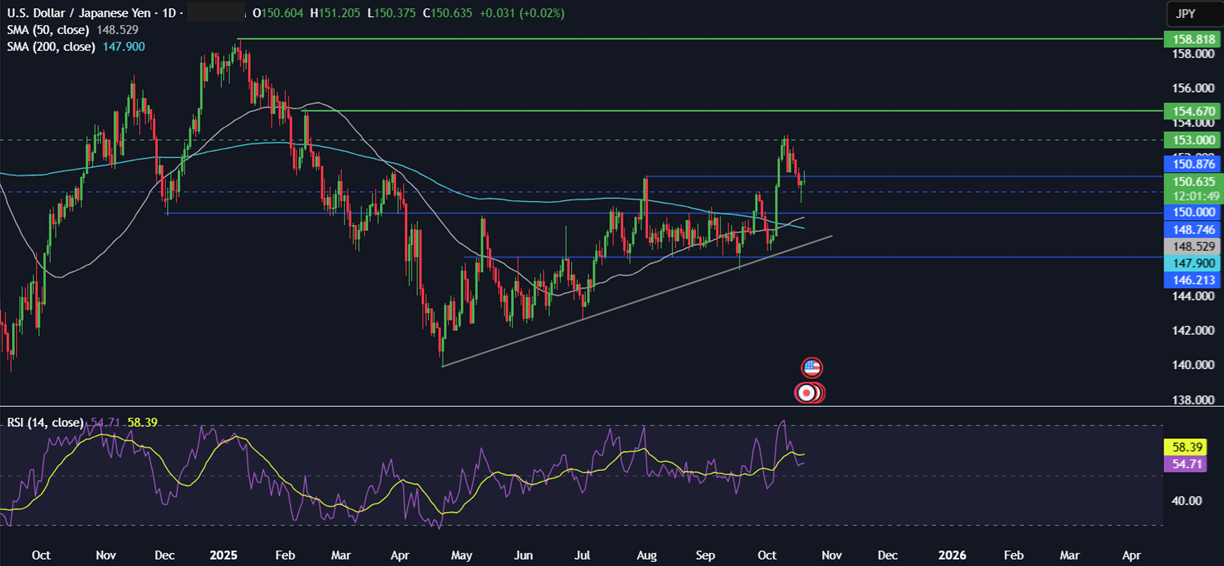
Trading involves risk.
The content provided here is for informational purposes only. It is not intended as personal investment advice and does not constitute a solicitation or invitation to engage in any financial transactions, investments, or related activities. Past performance is not a reliable indicator of future results.
The financial products offered by the Company are complex and come with a high risk of losing money rapidly due to leverage. These products may not be suitable for all investors. Before engaging, you should consider whether you understand how these leveraged products work and whether you can afford the high risk of losing your money.
The Company does not accept clients from the Restricted Jurisdictions as indicated in our website/ T&C. Some services or products may not be available in your jurisdiction.
The applicable legal entity and its respective products and services depend on the client’s country of residence and the entity with which the client has established a contractual relationship during registration.




